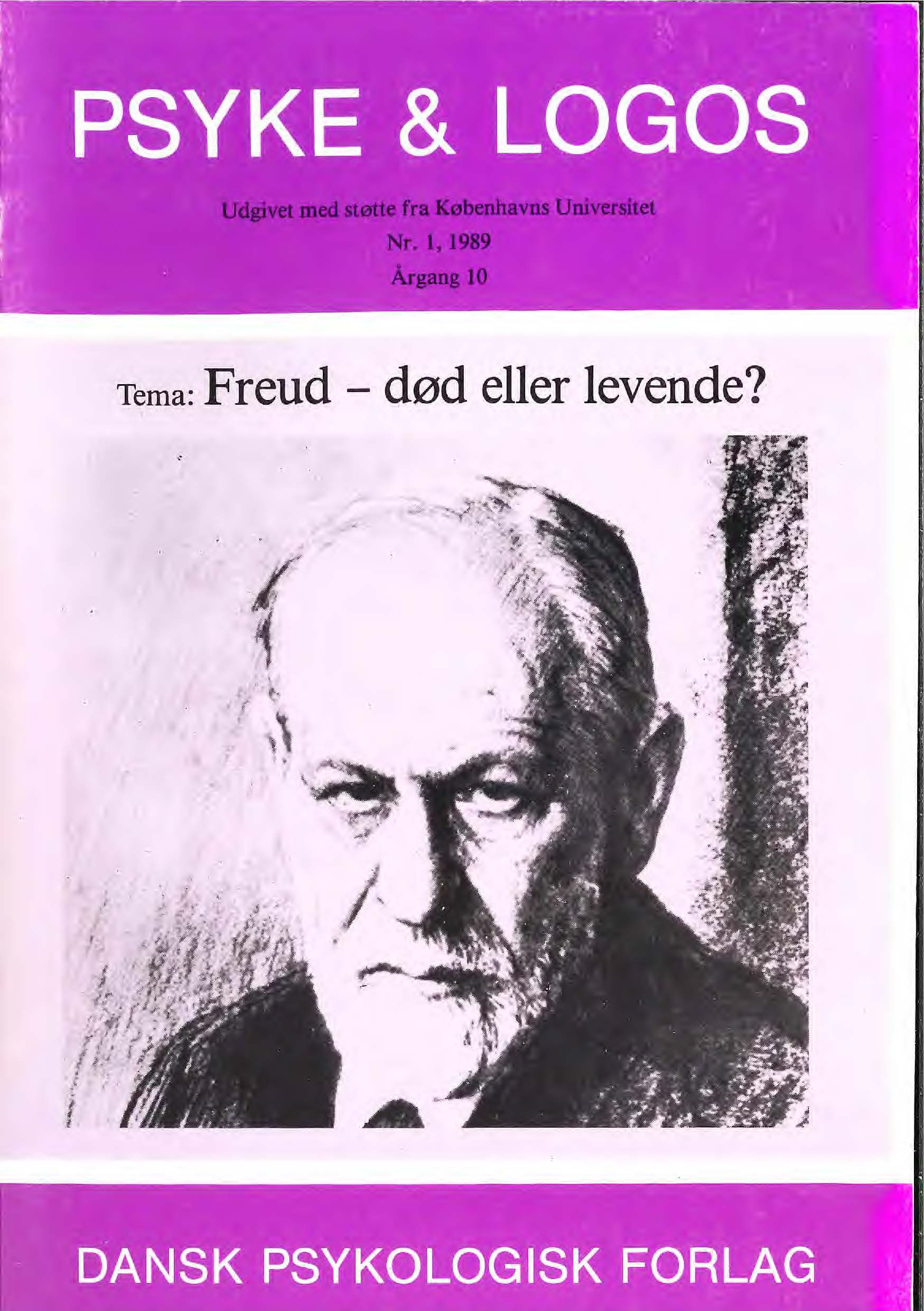Déjà vu
Om Freud, psykoanalyse, visualitet og skue-lyst
DOI:
https://doi.org/10.7146/pl.v10i1.134247Abstract
The unconscious expresses itself through images. It manifests itself via the pictorialization in dreams, fantasy, creativity and psychosomatic illnesses. Freud saw this. Yet at the same time he had a very distant relation to images. This comes through in his theory of dreams where the visual principle is made into words, and in his interpretation of the symbol - as well as in his
view on visual arts. The first sight - the maternal gaze and body - is especially discussed in the article in relation to the Freudian psychoanalysis and its emphasis on the verbal. The dilemma in the theory between the dependence on the visual utterances from the unconscious, on the one hand, and, on the other hand, the neglecting of the image and its qualities (the pre-verbal and
non-verbal) is seen in relation to more general suppression of the first sight and the first, other body - whereby an Tand a 'sight' are made into a 'not-I' and a 'not-sight'. Through discussion of and inspiration from Freud's paradox, theories are established
throughout the article about 'images of dreams', 'the pleasure of looking', 'the perceiving body', 'the images in-between' (:the beholder and the picture), 'the sight as experience', 'the silent images' - and more. The article closes with a discussion of how to approach the non-verbal with words - the paradox ofthe article itself - and at the same time how to pay respect to the
meaning that cannot be verbalized: the wordless is not without meaning, because it is without words.
Downloads
Published
How to Cite
Issue
Section
License
Ophavsret er tidsskriftets og forfatternes. Det er gældende praksis, at artikler publiceret i Psyke & Logos, som efterfølgende oversættes til andet sprog, af forfatteren frit kan publiceres i internationale tidsskrifter, dog således at det ved reference fremgår, at den oversatte artikel har et forlæg i en dansksproget version i Psyke & Logos. Artikler kan frit deles og linkes til på forsknings- og undervisningsnetværk (så som Blackboard). Link foretrækkes, fordi det giver oplysning om brug af tidsskriftets artikler.




